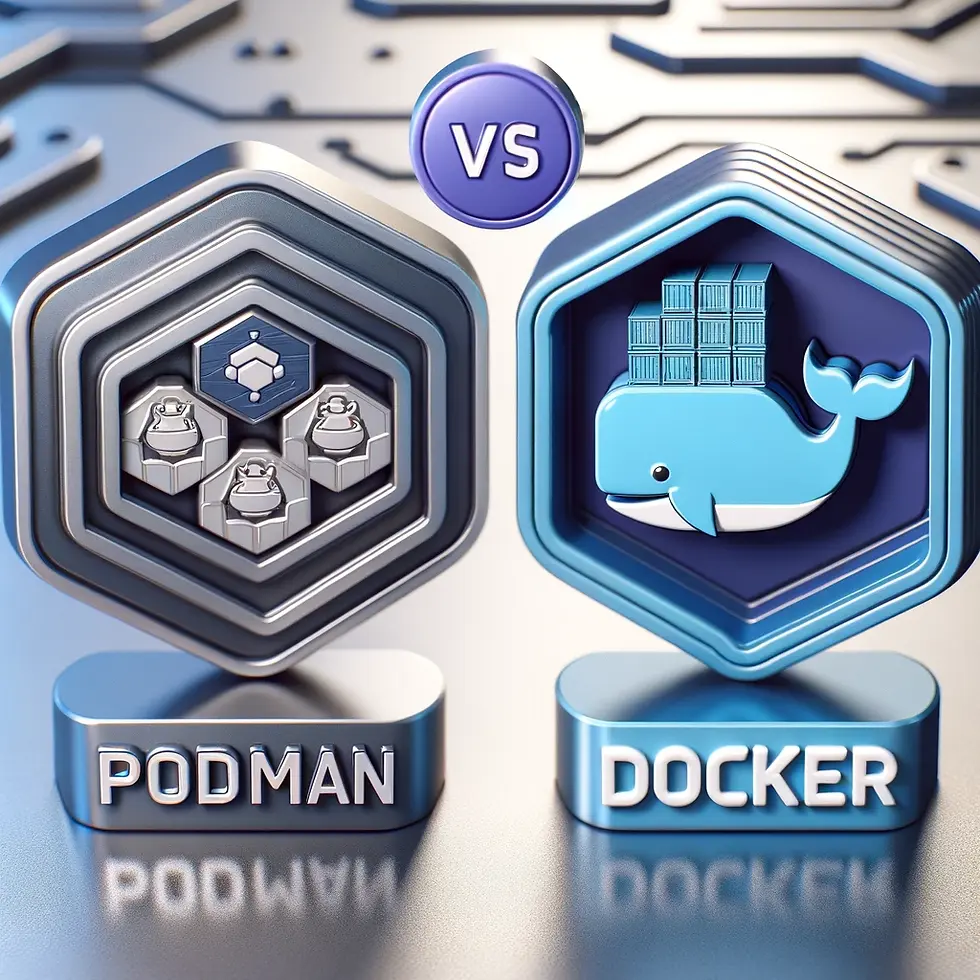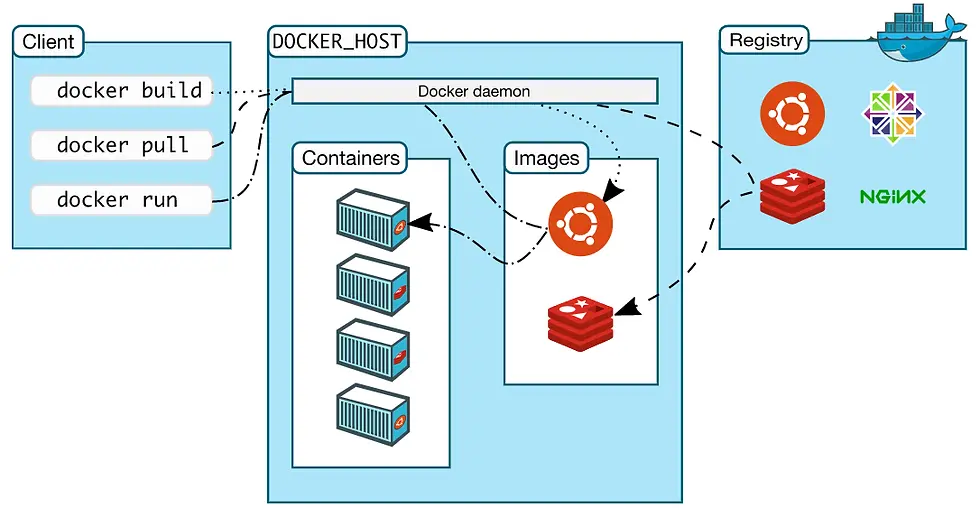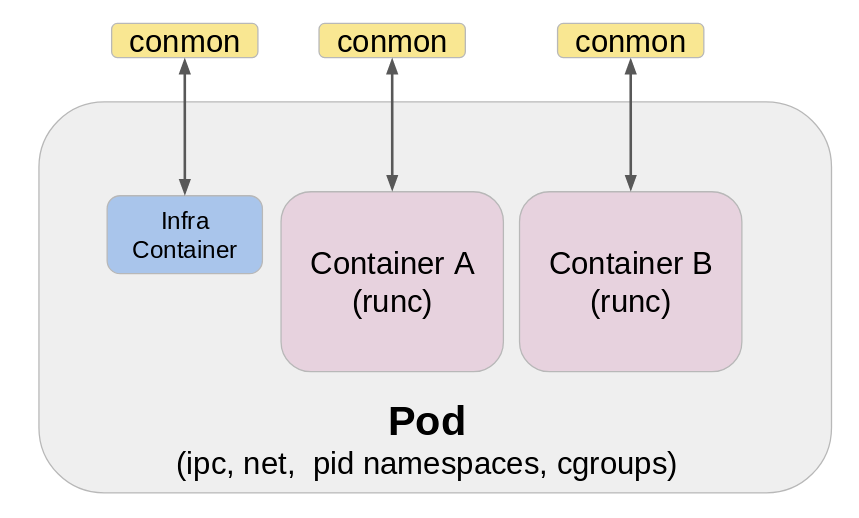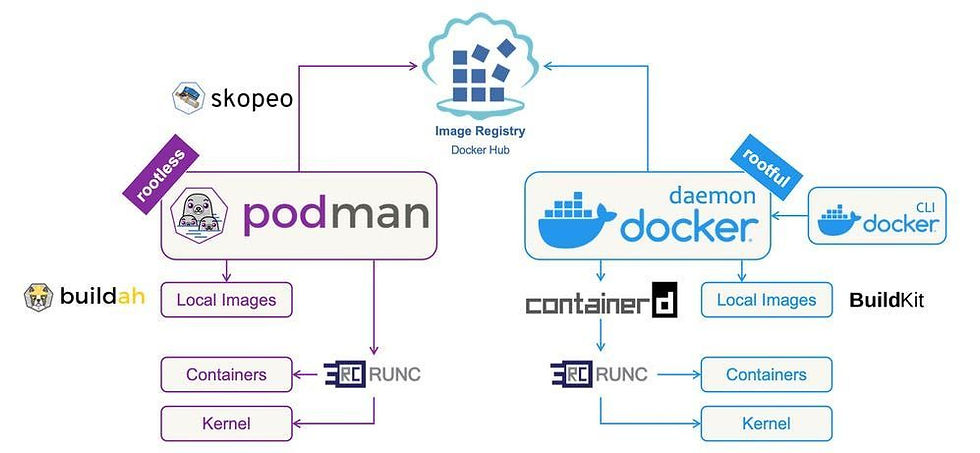Docker vs. Pod man: Choosing the Right Containerization Tool
- Ratheesh Kumar

- Mar 18
- 3 min read

Introduction
Containers have transformed how software is developed, deployed, and managed. Whether you're a developer, DevOps engineer, or IT administrator, choosing the right containerization tool is essential.
Docker has been the industry standard for years, but Pod Man has emerged as a strong competitor, offering additional security and flexibility. If you're wondering which tool is right for you, this guide will break down the key differences, advantages, and best use cases for both Docker and Pod Man.
By the end of this article, you’ll have a clear understanding of which containerization tool best suits your needs.
What is Docker?

Docker is a widely used containerization platform that allows developers to package applications and their dependencies into a single, portable unit.
Key Features of Docker:
Containerization: Packages applications into lightweight, isolated containers.
Docker Daemon: Uses a background service to manage containers.
Docker Hub: Provides a vast repository of prebuilt container images.
Easy Deployment: Simplifies multi-cloud and multi-platform deployments.
Advantages of Docker:
Mature Ecosystem: Backed by a large community and extensive documentation.
Broad Adoption: Used by major enterprises and cloud providers.
Easy to Learn: Simple CLI commands make it beginner-friendly.
However, Docker’s reliance on a daemon and root privileges has raised security concerns, leading to the rise of alternatives like Pod man.
What is Pod man?

Pod man is a daemon-less, open-source container management tool designed as a drop-in replacement for Docker.
Key Features of Pod Man:
Daemonless Architecture: Unlike Docker, Pod Man does not require a background daemon.
Rootless Execution: Enhances security by allowing non-root users to manage containers.
Docker-Compatible: Supports the same CLI commands as Docker.
Kubernetes Integration: Works well with Kubernetes and OpenShift.
Advantages of Pod Man:
Improved Security: No daemon means fewer attack vectors.
Better User Management: Can run containers without root privileges.
Lightweight & Efficient: It uses fewer system resources than Docker.
Pod man is ideal for security-conscious organizations and users who need greater control over container management.
Key Differences Between Docker and Pod man
When to Use Docker vs. When to Use Pod man

Use Docker If:
You need a well-established and widely supported container platform.
Your team relies on Docker Compose for multi-container applications.
You want easy integration with cloud providers and Kubernetes.
Use Pod man If:
Security is a priority, and you need rootless containers.
You prefer a Daemon-less architecture for better control.
You are looking for lightweight and efficient container management.
If you are already using Docker and want to switch to Pod Man, it’s worth noting that Pod Man provides Docker-compatible CLI commands, making the transition smoother.
Personal Insights
As a cloud architect, I have worked extensively with both Docker and Pod Man. Docker remains my go-to tool for general containerized applications due to its mature ecosystem and widespread adoption. However, when working with clients who prioritize security, I recommend Pod Man because of its rootless execution and daemon-less approach.
Ultimately, the choice between Docker and Pod Man depends on your use case, security needs, and familiarity with container tools. Both are excellent options and learning both can be beneficial.
Conclusion
Both Docker and Pod man are powerful containerization tools, but they cater to different needs:
Docker is great for those who need a user-friendly and feature-rich solution with extensive support.
Pod man is ideal for those who prioritize security and want to avoid running a background daemon.
Ready to Optimize Your Containerization Strategy?
Choosing between Docker and Pod Man can be challenging, but making the right decision ensures better security, efficiency, and scalability for your applications. Whether you're just starting with containers or looking to optimize your current setup, we can help!
📩 Contact us today for expert guidance on selecting and implementing the best containerization tool for your business!
Best Regards,
Ratheesh Kumar
Certified Cloud Architect & DevOps Expert




Comments